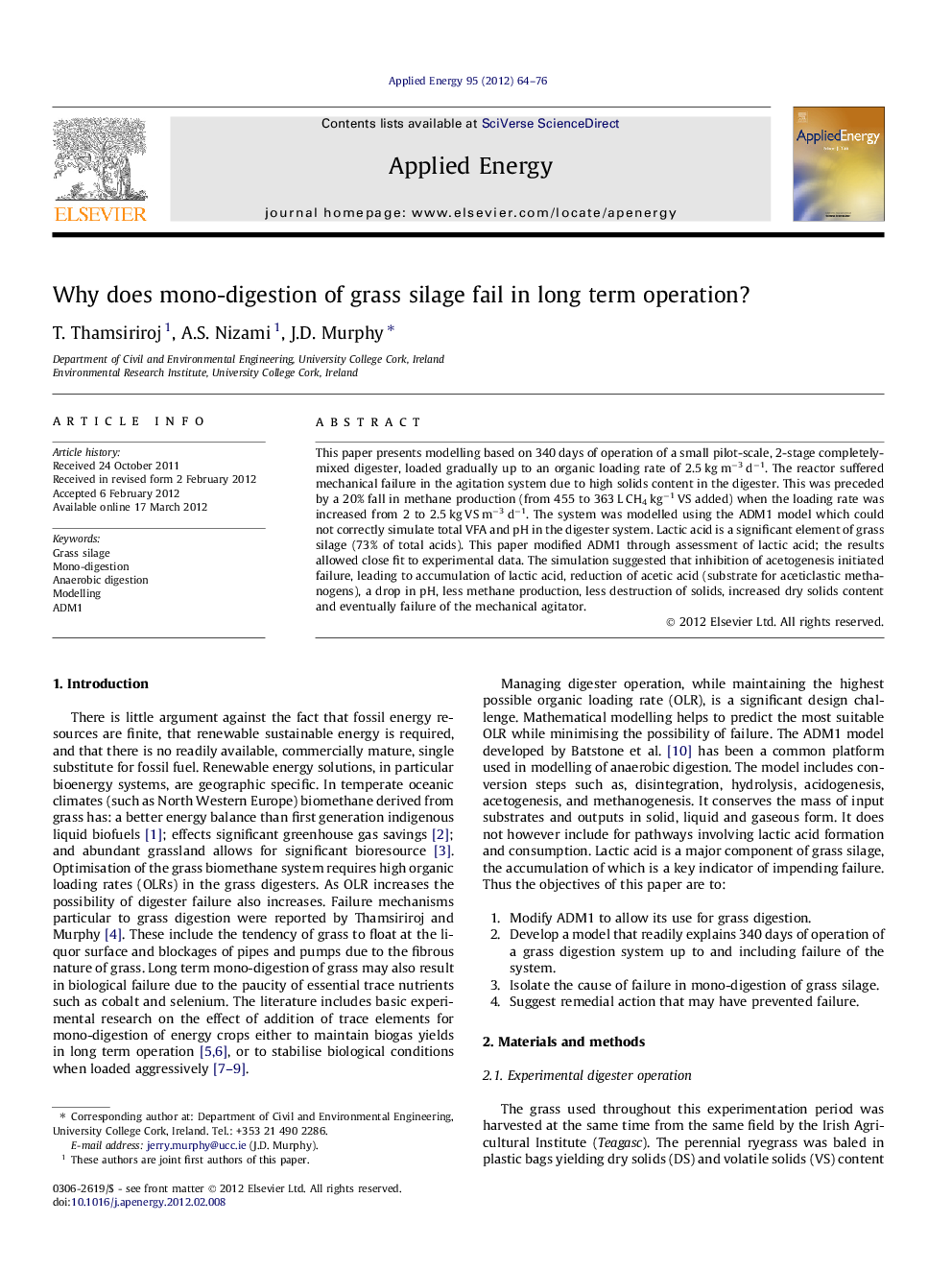| کد مقاله | کد نشریه | سال انتشار | مقاله انگلیسی | نسخه تمام متن |
|---|---|---|---|---|
| 243675 | 501933 | 2012 | 13 صفحه PDF | دانلود رایگان |

This paper presents modelling based on 340 days of operation of a small pilot-scale, 2-stage completely-mixed digester, loaded gradually up to an organic loading rate of 2.5 kg m−3 d−1. The reactor suffered mechanical failure in the agitation system due to high solids content in the digester. This was preceded by a 20% fall in methane production (from 455 to 363 L CH4 kg−1 VS added) when the loading rate was increased from 2 to 2.5 kg VS m−3 d−1. The system was modelled using the ADM1 model which could not correctly simulate total VFA and pH in the digester system. Lactic acid is a significant element of grass silage (73% of total acids). This paper modified ADM1 through assessment of lactic acid; the results allowed close fit to experimental data. The simulation suggested that inhibition of acetogenesis initiated failure, leading to accumulation of lactic acid, reduction of acetic acid (substrate for aceticlastic methanogens), a drop in pH, less methane production, less destruction of solids, increased dry solids content and eventually failure of the mechanical agitator.
► The ADM1 model is adapted to allow for analysis of grass silage digestion.
► The model describes a 340 day experimental period of a two stage wet digestion system up to and including failure.
► The simulation suggests that failure is initiated through inefficient acetogenesis.
► The simulation suggests that a loading rate of 3 kg VS m−3 d−1 is possible if trace elements are added.
Journal: Applied Energy - Volume 95, July 2012, Pages 64–76